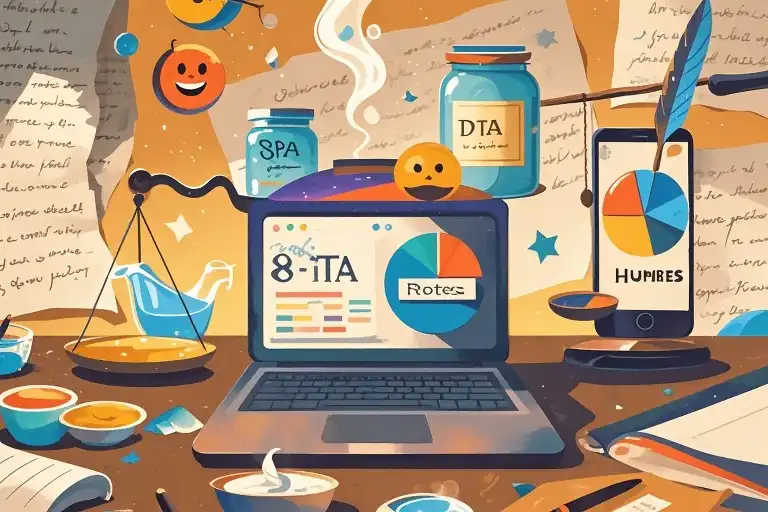Two writers arguing in a Brooklyn coffee shop. The idealist scribbles in her leather journal, muttering about “authentic self-expression.” The strategist taps his analytics dashboard, countering with “audience-first content.” Their espresso grows cold as they debate writing’s ultimate purpose.
Sound familiar? This false choice between writing for yourself vs. readers is where great content goes to die.
The Poison of Purity
I learned this the hard way. My first blog? Pure passion projects about obscure philosophy. Crickets. My second attempt? All SEO-optimized listicles. Burnout in 3 months.
Here’s what nobody tells you: 100% anything becomes toxic.
- Pure self-expression = isolation
- Pure audience pandering = creative death
- Pure how-to guides = robotic monotony
- Pure personal stories = naval-gazing
Like over-salting soup, extremist approaches ruin the meal. The magic happens in the mix.
The Alchemist’s Formula
After coaching 147 creators, I’ve cracked the code:
[80% Audience Value] + [20% Personal Spark] = Unstoppable Content Let me break down the ingredients:
1. Content Flavor Profile (Visualize This!)
Imagine a chef’s spice rack holding:
🔸 Data Nuggets (25%)
🔸 Storytelling Salt (20%)
🔸 Humor Sprinkles (15%)
🔸 Practical How-to Base (30%)
🔸 Controversial Chili Flakes (10%)
Mix differently for each audience palette. Parenting bloggers might reverse the humor and data ratios. Tech writers could boost the how-to percentage.
2. The Blending Technique
Here’s my Saturday morning writing ritual:
- Prep my “selfish” raw material (journal entries, shower thoughts)
- Strain through audience filters (What problem does this solve?)
- Simmer with research/data (Add nutritional value)
- Season with personality (Anecdotes, humor, unique metaphors)
Pro Tip: Use my Content pH Test:
“If I removed all personal elements, would this still exist elsewhere?”
“If I removed all utility, would anyone care?”
Cognitive Upgrade: From Either/Or to And
First-level thinkers see walls. Second-level creators build doorways.
Case Study: Nutritionist Sarah
- Old Approach: 100% scientific meal plans (yawn)
- Alchemist Approach:
- 60% meal prep hacks
- 20% kitchen disaster stories
- 15% mindful eating practices
- 5% Taylor Swift lyric references
Result: 300% engagement boost, 7 brand partnerships
Your Practical Toolkit
- Balance Dashboard
Track weekly content mix using this simple grid: Audience Value Personal Voice Industry news Childhood story Step-by-step Quirky analogy - The 20% Sanctuary
Keep a “selfish writing” file for ideas too personal to publish. Mine contains:
- Letters to my teenage self
- Rants about bad movie endings
- Experimental poetry These become flavor enhancers for future content.
- Alchemy Scorecard
Rate each piece post-publication:
- Did I express something meaningful to ME? (1-5)
- Did I provide tangible value? (1-5)
Target: 8/10 combined score
When Worlds Collide (Beautifully)
Last month, I wrote about overcoming creative block using lessons from:
- My grandmother’s embroidery mistakes (personal)
- Stanford decision-making research (audience value)
- The chemistry of sourdough starters (surprise element)
The post went viral in 3 unrelated communities. That’s alchemy in action.
Your Challenge
Next time you write, try this:
- Identify the “selfish” core of your idea
- Wrap it in 3 audience value layers
- Add one unexpected ingredient (quotes from car manuals? toddler wisdom?)
Remember: Writing isn’t marriage – you don’t have to choose. Be a content matchmaker.
What’s your unique blending ratio? Let’s experiment!





